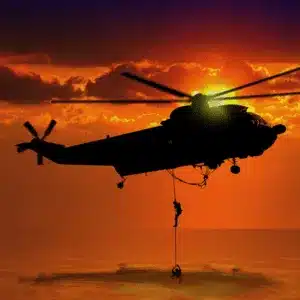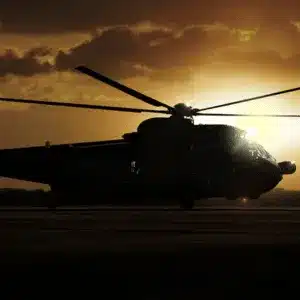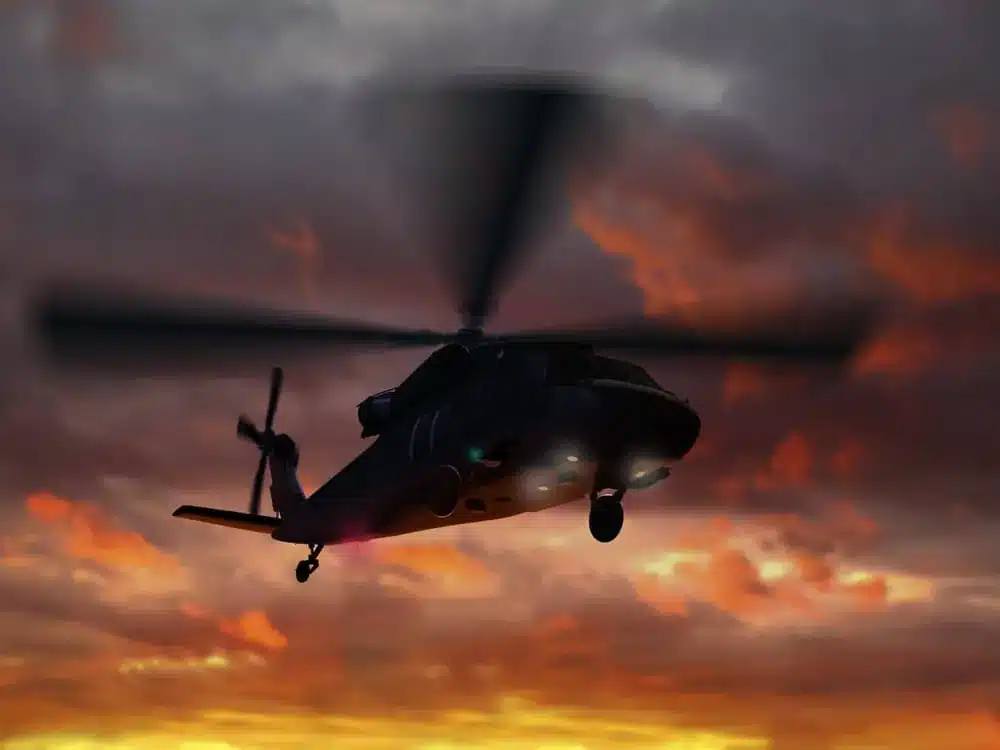The Invisible Challenge of Night Flying in Central Texas
Flying at night in the skies above Waco presents unique challenges that daytime pilots rarely encounter. Dangerous terrain features, unmarked obstacles, and the pitch-black expanses of rural Texas create serious safety concerns for local pilots attempting to navigate in low light situations, even with advanced night vision products.
Night operations in Central Texas have historically been limited by these visibility constraints, forcing pilots to either restrict their hours or accept significant risks. Agricultural pilots, emergency medical services, and private aviators alike all face the same fundamental problem. While tools like infrared illuminators and green phosphor goggles in night vision help mitigate some of these dangers, they don’t eliminate the need for extensive caution.
The vast open spaces surrounding Waco become treacherous landscapes after sunset, filled with invisible hazards that can spell disaster for even experienced pilots. Night flight concepts, originally developed and refined during World War II, have come a long way, but aviating at night still demands a sharp eye, the right gear like night vision goggles, and a deep respect for the risks involved.
When Night Flying Becomes a Matter of Life and Death

Limited night vision capabilities seriously impact Waco’s aviation community, where rescue operations, emergency missions, and agricultural flight situations are often delayed or canceled. Without night vision goggles, nvg technology, or an infrared illuminator, pilots must choose between safety and completing a mission.
Medical helicopter crews report turning down critical flights due to darkness. Even basic green phosphor vision goggles could achieve better clarity and carry out lifesaving jobs.
Crop dusting flights are also grounded. Proper night vision, night vision products, and lessons endorsed by the FAA would help detect vital detail, conduct flights, and overcome limitations during night air work.
How Aviation Night Vision Goggles Actually Work
Modern aviation night vision goggles use advanced night vision technology to amplify available light, allowing a pilot to see vital detail both in the air and on the ground during low visibility circumstances. These night vision devices convert photons into electrons, which are multiplied and projected onto a green phosphor screen for enhanced clarity and range.
The difference in safety is critical during flying situations and rescues. While some systems use white phosphor, many FAA-approved goggles retain the familiar green output. Trusted by military, this technology continues to help pilots fight darkness.
Training to See in the Dark: Specialized NVG Flight Training

Using aviation night vision goggles requires specialized pilot education. Our program helps pilots become capable of flying in low light situations with night vision goggles and vision goggles, particularly in Central Texas environment and conditions.
Ground school covers night vision, Federal Aviation Administration regulations, and how to interpret green phosphor displays and ground detail. Pilots also learn to adjust to darkness and monocular vision during critical rescue operations.
Flight instruction includes practical night vision gear use guided by pilot instructors with decades of experience. They emphasize visual clarity, range, and the benefits of safe navigation during night operations with the right systems and devices.
Common Myths About Night Vision Debunked
Many pilots new to night vision technology carry misconceptions about its capabilities and limitations. One persistent myth suggests that aviation night vision goggles provide perfect vision similar to daylight, when in reality they offer a roughly 40-degree field of view with some reduction in peripheral vision—differences that are important to understand, especially given the growing demand for this helpful device among helicopter and fixed-wing customers.
Another common misunderstanding concerns the ability to detect obstacles like power lines, which remain challenging even with advanced night vision devices. Proper training teaches pilots specific scanning techniques for these limitations and safely identify potential hazards within the functional range of their equipment.
The belief that bright lights completely blind night vision was true for early generations but is outdated with modern autogating systems. Today’s equipment can rapidly adjust to varying light conditions, making them far more helpful for customers operating in unpredictable environments.
From Military Innovation to Civilian Lifesaver

Though initially developed for military applications during World War II, night vision technology has evolved to meet the specific demands of civilian aviation. The systems now available to pilots, often enhanced with features like an infrared illuminator, represent years of refinement and adaptation.
The FAA has established clear guidelines for NVG device certification, maintenance, and operational standards to ensure safety across all applications. These regulations provide the framework for integrating night vision into everyday aviation activities while maintaining the highest safety standards.
Real Applications Transforming Waco’s Aviation Community
Local emergency medical services have reported dramatic improvements in their ability to respond to nighttime calls since implementing aviation night vision goggles. Flights previously deemed too dangerous now proceed safely.
Agricultural operations benefit from the ability to do precise applications during cooler night hours, reducing evaporation and improving effectiveness of treatments. This capability has proven particularly valuable during Texas’s hot summer months when daytime temperatures can impact agricultural flight operations.
Private pilots with proper certification experiencing the familiar landscape in entirely new ways, with the darkness revealing details and perspectives invisible during daylight hours. The night sky above Waco becomes not just navigable but unique.
Taking Your First Steps Into Night Vision Flying

For Waco pilots interested in exploring night vision capabilities, the journey begins with proper education and certification. Our local facility offers the region’s most comprehensive training program specifically designed for Central Texas flying conditions.
Experienced instructors guide new users through both the technical aspects of the equipment and the practical skills needed to operate safely in the night environment. The investment in proper training pays dividends in both safety and operational capability.
Contact our team today to learn how aviation night vision goggles can transform your ability to operate in low light conditions and overcome the challenges of night flying in Central Texas. Our experts are ready to help you achieve new levels of safety and capability in the dark Texas sky.
Illuminating the Future of Night Aviation in Waco
Aviation night vision goggles have fundamentally changed what’s possible for pilots operating after sunset. Night vision technology continues to advance, with each generation offering improved performance, comfort, and capability.
For Waco’s aviation community, these devices represent not just enhanced safety but expanded opportunity. Emergency services, agricultural operations, and private aviation all benefit from this revolutionary technology.
As night vision technology continues to evolve and become more accessible, the distinction between day and night operations will continue to blur for properly equipped and trained pilots. The dark sky is no longer a barrier but another environment where skilled aviators can safely and confidently accomplish their missions.

